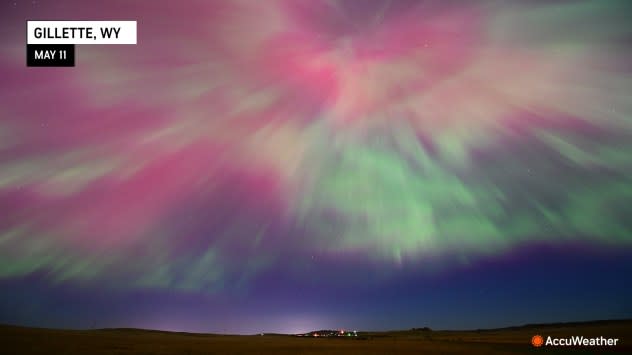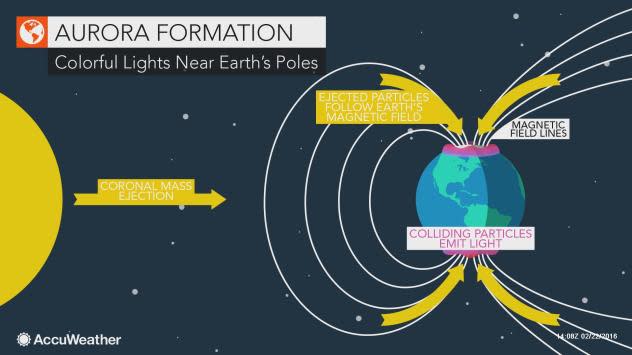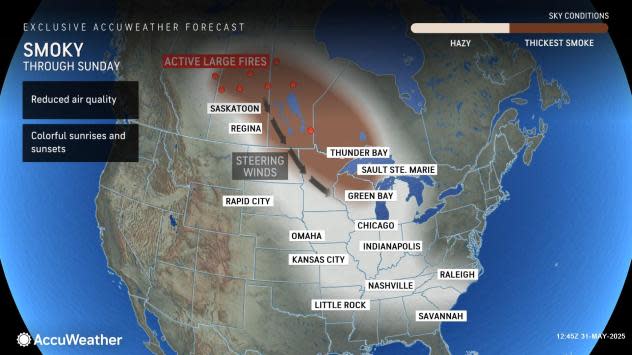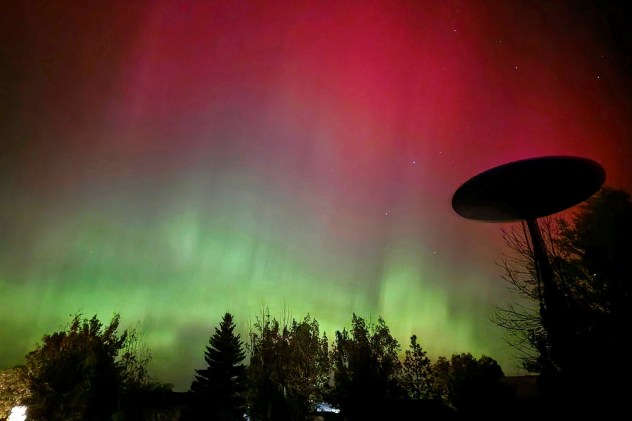The northern lights are seen from East Helena, Mont., Monday, Oct. 7, 2024. (AP Photo/Amy Hanson)
The biggest display of the northern lights since 2024 could unfold at the end of the weekend and start of the new week following a massive eruption on the sun.
On Friday evening, satellites detected an explosive solar flare on the sun. This sent a tremendous cloud of charged particles toward the Earth, and when it arrives, it will set off an expansive display of the aurora.
The northern lights could glow as early as Sunday night, with the potential for another showing on Monday night — and people in more than half of the United States could see the Aurora Borealis.
“The aurora may become visible over much of the northern half of the country, and maybe as far south as Alabama to Northern California,” NOAA’s Space Weather Prediction Center said. The impending solar storm is predicted to be a level 4 out of 5.

Aurora over Gillette, Wyoming early on Saturday, May 11, 2024. (AccuWeather/Tony Laubach)
The aurora happens when charged particles from the sun interact with Earth’s magnetic field. Typically, the particles are funneled toward the north pole and south pole, but during bigger events like the one that is expected to unfold, the aurora can be seen in areas farther away from the poles.
The green, red, pink, purple and blue colors are caused when the solar particles interact with oxygen and nitrogen in Earth’s atmosphere.

AccuWeather.com
Clouds are a concern for onlookers from Idaho and Montana southward into New Mexico and Arizona, but better sky conditions are in the offing for much of the West Coast states.
In the central and eastern U.S., the bigger concern will be smoke from Canadian wildfires, which could impact viewing conditions from the Midwest into parts of the Southeast.

AccuWeather.com
Viewing Tips
The farther north you are, the better the light show will be. To get the best view of the Aurora Borealis, it is also important to be in a dark area away from light pollution.
In some areas, the aurora may appear as a faint green or red glow in the northern sky. However, in the far northern U.S., such as New England or the northern Rockies, the aurora could appear overhead.
Furthermore, if the aurora isn’t bright enough to see with the naked eye, it can still be photographed using a camera with a long exposure. This technique collects more light, making the northern lights more visible in photographs.
